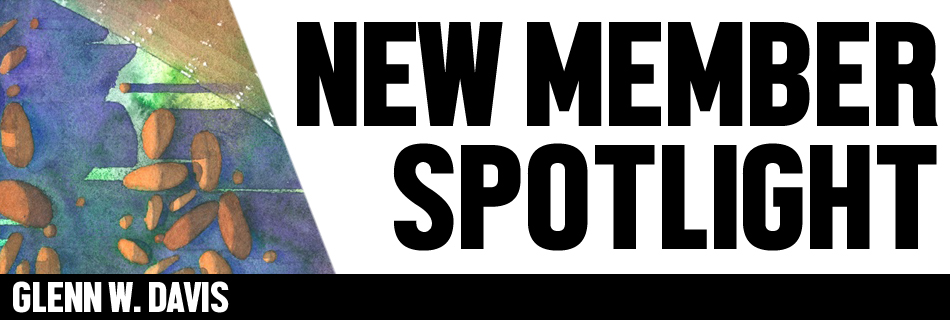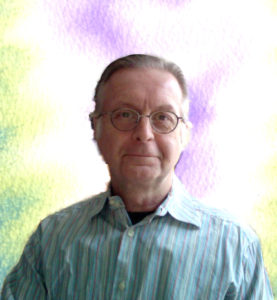
Glenn W. Davis
What are your earliest memories of being artistic? I have always been attracted to images and color. My family would get the daily newspaper and I remember reading the comics pages, but they were only in black and white. However, the Sunday paper had the color comics. I loved the colors. I can also remember copying some comics as well. Another memory is of a painting that depicted a man in a dory with an enormous fish in the stern. It hung in my grandfather’s sitting room. My grandfather was a fisherman hobbyist and owned a boat in Boston Harbor. Manys the time when I would visit, I found myself looking at this picture. It wasn’t until years later than I learned it was a copy. It was called “The Fog Warning” by Winslow Homer.
When did art become a pursuit? The pursuit started in high school, so I have been creating art works for years. It is important to express myself and get the ideas that come to me out of my head and onto the paper or canvas. So it has been a pursuit of art for art’s sake.
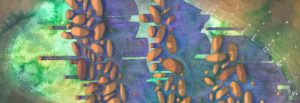
Are you self-taught or formally educated in visual art? I’m both academically taught and self-taught. I attended the New England School of Art & Design. I studied commercial art part of my tenure there. The other part was in fine art. The school had shifted its focus midway through my attendance so I received the benefit of both types of academic training. The self-taught aspect came when I wanted to learn watercolor painting. That wasn’t taught at the school which meant if I wanted to learn watercolor, I had to learn it on my own.
How did you first become involved with CAA? Some years ago, I was involved with CAA. I participated in some shows and helped out whenever I could. It was an enjoyable experience. But life got in the way and I dropped out. What brought me back to CAA were those aforementioned memories.
In what other ways are you involved in the local art community? I’ve been teaching art, particularly watercolor, pastel and drawing for a number of years. I currently teach at the Boston Center for Adult Education and the Museum of Fine Arts, Boston. In the past, I taught at the DeCordova Museum in Lincoln and the Cambridge Center for Adult Education.
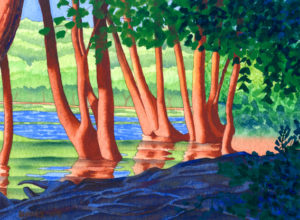
What role do you think the artist plays in society? I think that art can raise questions but not answer them. Art reflects the society it lives in. Any artist can’t help but be influenced either positively or negatively by his or her surroundings. It is up to the individual artist how he or she responds to the stimuli that they’re confronted with.
What medium do you currently work in and how did you choose this medium? Currently I’m working with watercolor. Initially I didn’t like watercolor. It was more difficult than acrylic or oils. But being a father at the time, there were other expenses to take care of so I was forced to find a less expensive medium. Watercolor fit the bill.
What is your creative process? Where are you finding ideas for your art these days? Earlier I spoke of the surroundings an artist lives with. I like animals and in the past have had pets. I’m what could be considered a PBS zoologist. Having read material on endangered species, I created a series of animal portraits as a way to alert the viewer to the beauty and wonder of creatures like gorillas, jaguars or crocodiles. While I have some interest in architecture, the New England architectural color palette is not adventurous. Since I love color, I thought I would alter that palette to my own taste. So I’m working on a series of New England traditional buildings with an alternative color scheme.
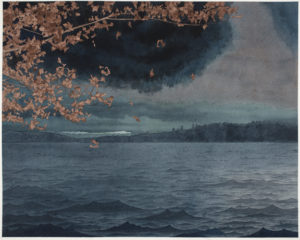
How do you choose your subject matter? Is there a reoccurring theme that carries throughout your work? Landscapes are a dominant theme. Again that goes back to what an artist experiences in his or her daily life. I get around on a bicycle so that exposes me to the weather and the land around me. Those experiences have sparked a few pieces. Not too long ago, I drew sketches of the place where I live. It has some unique qualities. I turned some of those sketches into watercolor works.
In your opinion, what’s your best/favorite piece you’ve made? That’s a difficult question to answer. There are watercolor series that have stood the test of time. I think that is a very good measure of how strong an art idea is. If you can look at it some years later and genuinely feel the work still holds up, then that is a great yardstick to judge a piece. I do have such pieces in my portfolio.
What is one of your artistic goals for 2018? I don’t tend to think in terms of goals. I live in an intuitive sense of mind when it comes to art. I respond to ideas from a comment from someone, a short-lived phenomenon in weather, a sidelong glance out the window or a particular interest of mine.
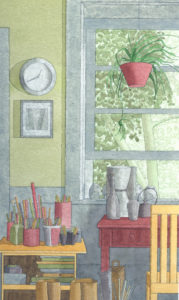
What’s your favorite place to see art? Mother Nature is the supreme colorist. I wish I went to the art school she went to. She matches two or three colors with such skill, especially with flowers. And the admission is free. Now as to human art, the Museum of Fine Art, Boston is a favorite place. It’s a place to see old favorites like “Dance at Bougival” by Renoir as well as current exhibitions. Another place is a gallery that I have either heard about or found online.
What living artists are you inspired by? None. The ones who inspired and continue to inspire me are all dead.
Do you own any art by other artists? No, I don’t unfortunately.
Do you have any shows coming up? No, not yet. I’m on a renewed trek to get some of my work seen in the galleries of CAA and other places in and around New England.
See more from Glenn!
Website: glennwdavis.com
Facebook: Glenn Davis
Instagram: davis.w.glenn
